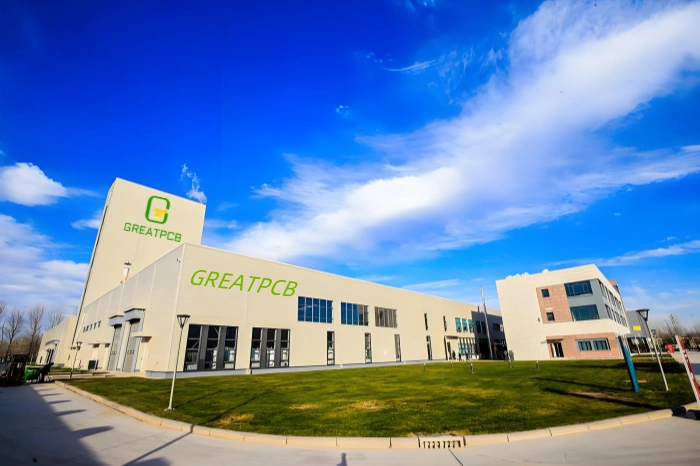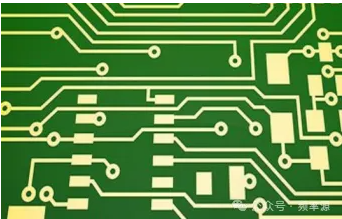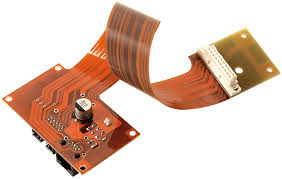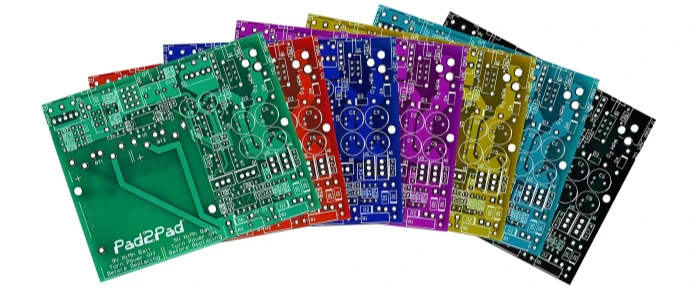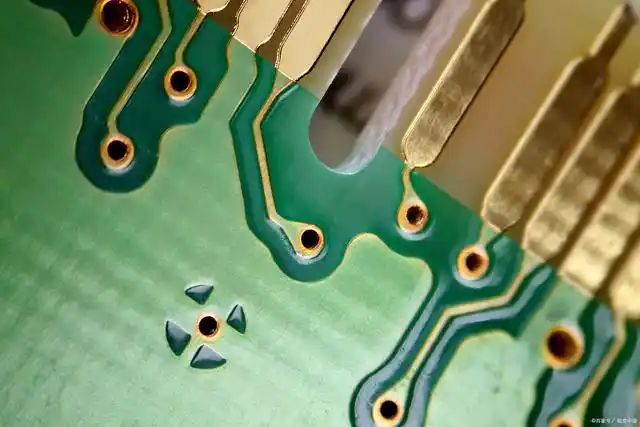Copper Clad Laminate: The Backbone of PCB Manufacturing
By PCBA PrototypePublished On: 2025-02-10Categories: PCB Design, Services, Technical0 Comments on Copper Clad Laminate: The Backbone of PCB Manufacturing
By PCBA PrototypePublished On: 2025-02-10Categories: PCB Design, Services, Technical0 Comments on Copper Clad Laminate: The Backbone of PCB Manufacturing

Introduction
In the vast landscape of Printed Circuit Board (PCB) manufacturing, Copper Clad Laminate (CCL) is the unsung hero, serving as the fundamental building block. CCL is a composite material, consisting of a base material and a copper foil layer. It plays a crucial role in determining the performance, reliability, and functionality of PCBs, which are the nerve centers of countless electronic devices. From the sleek smartphones in our pockets to the powerful servers in data centers, CCL is at the heart of modern – day technology. As technology continues to advance, with the demand for smaller, faster, and more energy – efficient devices, understanding CCL becomes even more essential.
What is Copper Clad Laminate?
CCL is a composite material with two main components. The base material acts as the structural support and electrical insulator. For rigid PCBs, glass fiber – reinforced epoxy resin, like FR – 4, is a popular choice. It offers good mechanical strength and electrical insulation. For flexible PCBs, materials such as polyimide films are used due to their flexibility. The copper foil, made of high – purity copper for its excellent electrical conductivity, is laminated onto one or both sides of the base material. This copper foil is responsible for carrying electrical signals and power across the PCB, enabling the creation of complex circuitry patterns.

Classification of Copper Clad Laminate
Based on Mechanical Rigidity
- Rigid CCL: Materials like FR – 4 and CEM – 1 are widely used in traditional PCB manufacturing. FR – 4 is known for its high mechanical strength, dimensional stability, and good electrical insulation. It can endure the mechanical stress during PCB manufacturing processes such as drilling and soldering. CEM – 1, with a paper core and glass – fiber outer layers, is cost – effective while still maintaining satisfactory performance. Rigid PCBs in desktop computers and industrial control panels rely on rigid CCLs.
- Flex CCL: These are made with flexible base materials like polyimide film. Flex CCLs can bend and twist, making them ideal for applications with limited space or where flexibility is required, such as in wearable devices. Flex – rigid PCBs combine the advantages of both, using rigid CCLs for structural support and flex CCLs for flexibility.
Based on Insulation Material and Structures
- Organic Resin CCL: FR – 4 and CEM – 3 are common examples. They offer a good balance between cost, electrical performance, and mechanical properties, making them suitable for general – purpose PCB applications.
- Metal – base CCL: With a metal core (usually aluminum or copper), these CCLs have excellent thermal conductivity. They are used in high – power applications like high – power LED lighting and power electronics to dissipate heat effectively.
- Ceramic – base CCL: Known for their high thermal stability, low thermal expansion coefficient, and excellent electrical insulation, ceramic – base CCLs are used in high – temperature applications such as aerospace and military equipment.
Based on Thickness
- Standard Thickness CCL: With a minimum thickness of 0.5mm, standard thickness CCLs are suitable for applications that require a certain level of mechanical strength, such as large – scale industrial control PCBs.
- Thin CCL: Thinner than 0.5mm, thin CCLs are popular in the miniaturization trend of electronic devices. They are used in mobile phones and tablets to achieve a more compact PCB design.
Based on Reinforcing Material Types
- Glass Fiber Cloth Base CCL: FR – 4 and FR – 5 are examples. They offer high mechanical strength, good dimensional stability, and excellent electrical insulation, making them suitable for high – end PCBs in servers and advanced communication equipment.
- Paper Base CCL: Like XPC, paper – base CCLs are inexpensive with basic mechanical and electrical performance. They are used in low – cost consumer electronics.
- Compound CCL: CEM – 1 and CEM – 3 combine the advantages of different materials. CEM – 1, for example, has a paper core for cost – reduction and glass – fiber outer layers for better performance, and is used in mid – range products.
Based on Applied Insulation Resin
- Epoxy Resin CCL: FR – 4 and CEM – 3 are common epoxy – resin – based CCLs. Epoxy resin provides good adhesion, electrical insulation, and chemical resistance, making these CCLs suitable for a wide range of applications.
- Phenolic CCL: FR – 1 and XPC are phenolic CCLs. FR – 1 is often used where flame – resistance is crucial, while XPC is for low – cost applications.
Key Performance Requirements of an Excellent CCL
Appearance
A perfect CCL should have a flat and smooth surface. Any defects on the copper foil, such as dents, scratches, resin points, wrinkles, pinholes, or bubbles, can lead to performance issues in the PCB. For example, dents and scratches can disrupt the electrical current flow, while resin points can interfere with component adhesion during soldering.
Size
CCL must meet the precise size requirements of PCBs. Deviations in length, width, diagonal, or warpage can cause problems during manufacturing. A warped CCL can lead to component misalignment and soldering issues.
Electric Performance
Parameters like dielectric constant (Dk), dielectric loss tangent (Df), volume resistance, and insulation resistance are critical. In high – speed applications, a low Dk value is essential for fast signal transmission, while a high Df value can cause signal degradation and increased power consumption.
Physical Performance
Dimensional stability, peel strength, bending strength, heat resistance, and punching quality are important. High peel strength ensures the copper foil remains attached during manufacturing, and good heat resistance is crucial for PCBs in high – temperature environments.
Chemical Performance
CCL should have good flammability, chemical resistance, high Tg (glass transition temperature), and low Z – axis coefficient of thermal expansion. These properties ensure the PCB’s reliability and functionality, especially in harsh chemical or high – temperature conditions.
Environmental Performance
Low water absorption is necessary, especially in humid environments. Excessive water absorption can cause electrical short – circuits and mechanical stress in the PCB.
Manufacturing Process of Copper Clad Laminate
Material Selection
- Reinforcement Materials: Glass fiber cloth provides high strength and insulation, suitable for high – end PCBs. Wood pulp paper is a cheaper option for low – cost applications but has lower mechanical and thermal properties.
- Resins: Epoxy resin is widely used for its adhesion and insulation properties. Phenolic resin offers high heat resistance but has relatively lower electrical performance in some aspects.
Impregnation
The reinforcement material is immersed in resin to ensure uniform resin distribution. This step is crucial as uneven resin distribution can lead to variations in CCL performance.
Drying
After impregnation, solvents and moisture need to be removed. Proper drying is essential to prevent issues like bubbles and reduced adhesion in the final CCL.
Curing
The resin is cross – linked under heat and pressure to form a hardened structure. The curing conditions significantly affect the CCL’s mechanical and electrical properties.
Copper Cladding
Hot – pressing is commonly used for rigid CCLs to attach the copper foil, while electroplating is used for flexible CCLs or when a thin, uniform copper layer is required. Surface treatments are often applied to enhance the adhesion between the copper foil and the base material.
Application Fields of Copper Clad Laminate
Electronic Industry
CCL is the foundation for PCBs in all electronic devices. In smartphones, it enables the connection between components like the CPU and sensors. In laptops, it supports the complex network of components, ensuring stable electrical connections for efficient operation.
Automotive Industry
Used in automotive control systems, in – car entertainment, and advanced driver – assistance systems (ADAS). High – quality CCLs are essential for reliable signal transmission and heat dissipation in these applications.
Communication Industry
CCL is crucial for base stations, switches, and routers. In base stations, CCLs with low Dk and Df are needed for high – frequency signal transmission to ensure seamless communication.
New Trends of Copper Clad Laminate
Halogen – free CCL
In response to environmental concerns, halogen – free CCLs control the content of chlorine and bromine. They have better heat performance and size stability but lower peel and bending strength compared to traditional CCLs. They are increasingly used in consumer and automotive electronics.
Lead – free CCL
Designed for lead – free soldering to meet environmental regulations like RoHS, lead – free CCLs use a different curing system. They have better thermal performance, CAF (Conductive Anodic Filament) resistance, and water absorption resistance, and are becoming more widely used in the electronics industry.
Conclusion
CCL is the cornerstone of PCB manufacturing. Its performance requirements, diverse classification, complex manufacturing process, wide – ranging applications, and emerging trends all contribute to the development of the electronics industry. As technology continues to progress, CCL will continue to evolve to meet the ever – increasing demands of the electronics market, enabling the creation of more advanced and efficient electronic devices.



